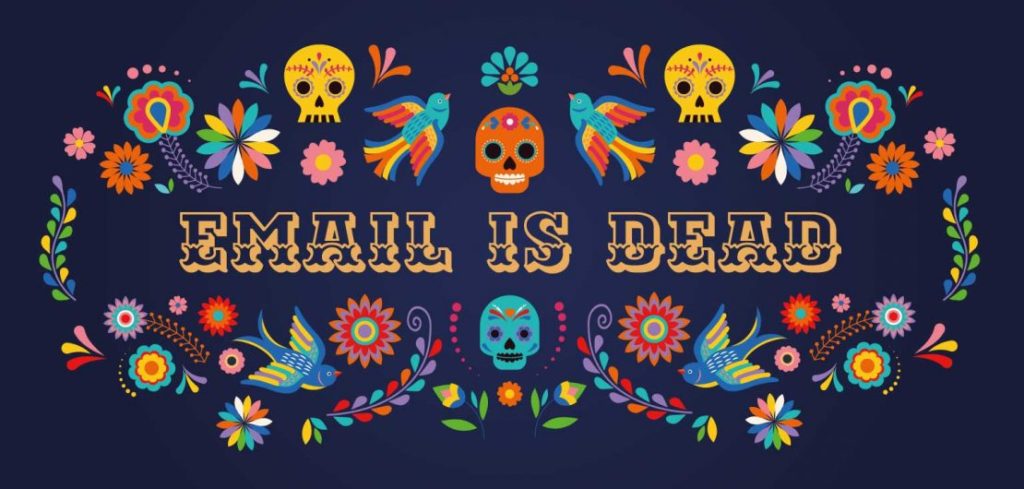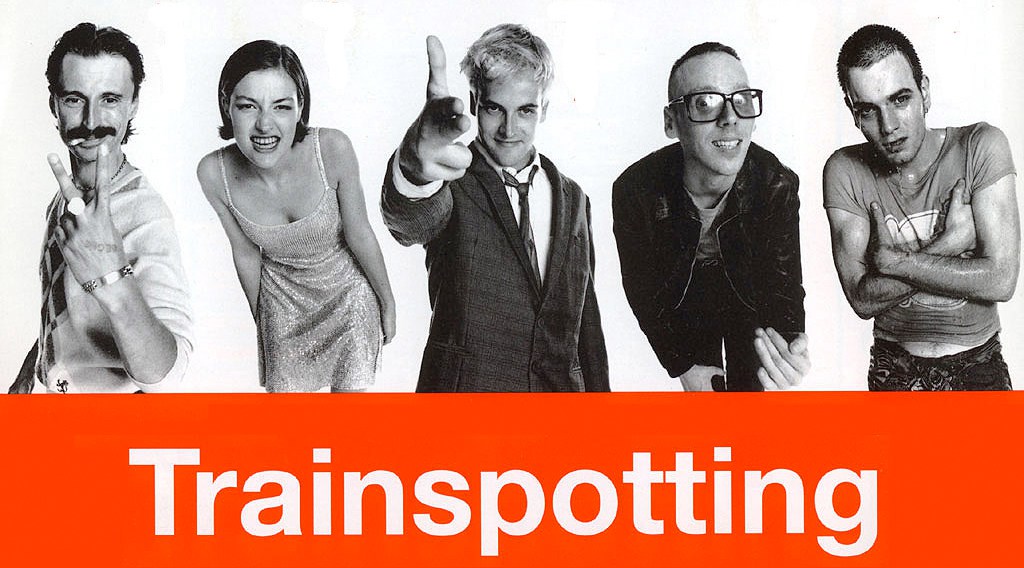Email is killing internal communications – let’s fight back

I hate email. And I bet you do too. But too many of us are still its slave. Today, let us take back control. Let’s put people and productivity back into the heart of work.
Let us liberate the inbox-enslaved.
Let us step away from the “reply all” the “dear all” and the passive-aggressive “CC”. Which, by the way, stands for Carbon Copy. Come on, Carbon Copy! It’s time to move on!
In many organisations, email has completely replaced what we think of as real work. But we know that valuable work like collaborating with colleagues, project management and communicating as leaders are poorly served by email.
Yet we persist in managing workflow and communications by a network of inbox-driven individuals who can only keep work going by putting all their energy into continually checking, sending and replying in an attempt to maintain control and push things towards completion.
Yet, it’s not even efficient at pushing things towards completion. Email threads lead to more email threads, which lead to inefficient meetings. It could be two weeks before you have a decision or a way forward on something very simple.
And everything is jumbled together. With equal weighting given to an important CEO announcement and a maintenance request to stop leaving biscuits out for the mice.
That’s not all. One of the biggest evils of email in my book is that it’s secret by nature. Unless you’re bought into the loop you don’t know what conversations are taking place. In these closed cultures, you get silos of information and comfort in secrecy.
Isn’t it more satisfying to be part of the conversation?
To work in an open culture where it’s more inclusive and you can have a say? So email is bad for building positive work culture, it encourages people to hold onto knowledge as a source of power and it’s bad for getting stuff done because the right people don’t know what’s happening.
We’ve probably all worked with people who like to be the knowledge filter. They drip-feed snippets of ‘insider information’ to make you feel special. Then you realise they are telling other people the same ‘secret’ information or telling everyone different information… playing people and teams off against each other. It’s like working in a quick-sand culture. You have no idea what’s really going on.
50% of the workforce will be Millennials in 2020, according to PWC, and they want to feel empowered to make a difference, but really, isn’t that what we all want? The future of work will be open and collaborative and the tools we use need to naturally support that sort of culture. And that’s a culture that’s better for our souls and our mental health.
Secret by default
The very clever Marshal McLuhan once said the medium is the message. So the medium itself sets the tone, it’s not our fault email brings out the worst in people and businesses. Even the most well-intentioned can’t escape that email is secret by default and slow at helping us make decisions. And we are bound by its super formal conventions.
Text-based
Another big weakness is it’s text-based. There’s a visual element to pretty much every channel we use in our personal lives nowadays. And it’s hard to be nuanced, even if you spend two hours crafting what you think is the perfect response, Linda from HR is still offended by the ‘tone’ you used.

Say I receive an email from a team member, it contains a long proposal but I can’t answer it straight away and anyway I can see it’s not in line with the direction we’re going. I can ignore it, acknowledge it ‘quickly’ or respond fully to the proposal. If I ignore it until I’m ready Fred won’t be recognised for his efforts for quite some time (recognition delayed is recognition denied) and if I reply it’s going to take me away from the project I’m working on…I decide to reply…
The rules of email: this is what I have to say:
Hi Fred (no “hi” or “dear” and people get offended)
Thank you for your email (got to have an acknowledgement in an email!)
Love the idea and what you’ve put into it, let’s discuss it when I’m in the office. (now I’ve had to lie because I’m doing this quickly, no time for nuance.)
Kind regards, Caroline (got to have a nice formal sign off)
Fred knows by this response that I don’t really like what he’s said. But it’s also taken me at least five minutes to write that email. It’s taken my focus from the project I should be working on, so that’s really a 15-minute gap before I get back to the deep concentration I need to finish my task.
What if I had a social tool that I could ‘simply’ like Fred’s post on his proposal, so he feels acknowledged. He gets a tiny dopamine hit from that and feels good. Another colleague sees it, recognises relevance for a project they are working on it and leaves a comment. Now Fred is very happy. I spent one second on my like, get back to my project in five mins and move on. I add a hashtag #task on Fred’s post so I remember to talk about it in our catch up, that goes straight into my task management tool with a precis of the conversation.
We’re friends!
What if such a tool existed. Oh, but it does. Now don’t be disappointed that I’ve drawn you in with a compelling argument (so modest Watkin!) and now I damp your squib with a sales plug.
Come on, I’m not like that, you‘ve read this far, we’re friends now. If you know me, you know I’ve got integrity coming out my ears. Ok, so there was this one time I said I could waterski to impress a boy but hey who hasn’t stretched their integrityness (yeah it’s a word) in the pursuit of love.
I digress, the tool is Workplace by Facebook and I love it. I implemented it for Robert Walters Group and I saw the impact it had on culture, communications and decision making. Of course, other social collaboration tools are available.
Collaborating is key to productivity
By collaborating in groups we all see what’s going on, we can send more nuanced internal communications more quickly, and we can see who is online and jump on a quick call or video call to get a quick decision. What takes two weeks in an email/meetings culture takes us two hours in a collaborative open one.
Communications drive a business
Great communication is a real competitive advantage. 69% of CEOs surveyed by Deloitte think open communications will help them achieve their vision. Yet only 14% are satisfied with current communications.
We’re at a tipping point. Compelling internal communications can’t be built around email any longer and neither can great work environments.
Choose people. Choose productivity. Choose life.*
Let’s chat more about changing your company into a community: call me, Caroline, on + 44 (0) 7946 524 304 or email me at hello@the300.co
*90s film reference to Train Spotting there for all the Generation Xers.

